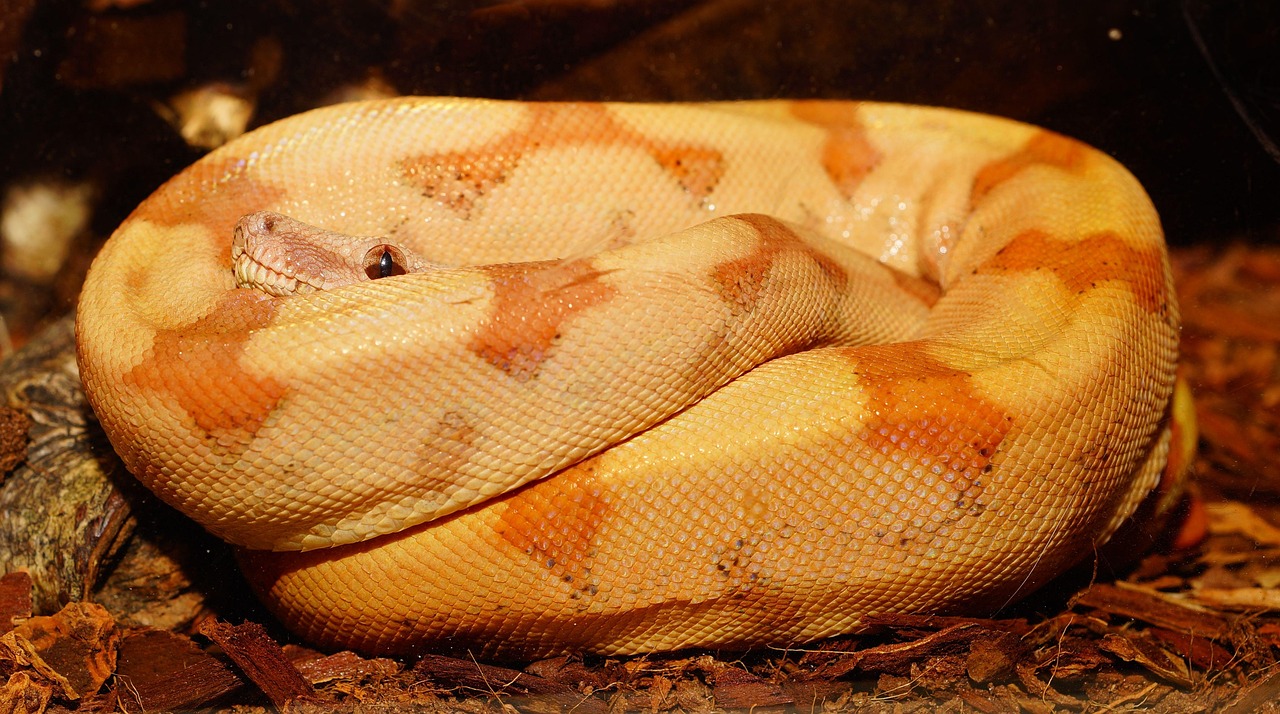This post tells you about all the essentials for keeping your snake happy and healthy.
Ensure a suitable food source for the size of your snake
It is illegal to provide live food in the UK. All food should be thoroughly defrosted overnight in warm water before feeding, and ideally warmed a little before being offered. Different snakes have different taste buds, so try a variety of species. Ensure food is of good quality. Day-old chicks no not provide a balanced diet. Care must be taken with food hygiene to avoid food poisoning – for you and your pet!
A water source must be available and should be large enough for your snake to sit in, if desired
Not all snakes will drink – the majority of their fluid intake comes from their prey – but they should have the facility to do so, if desired. Water soaks will also help with shedding. Water baths should be appropriate to species type (fresh water, brackish water etc.) – please contact us for more information on this.
Vivariums
These should be large enough to provide a heat and humidity gradient. There should be space to allow your pet to move around, and they must have adequate ventilation. Snakes are sometimes kept in drawer systems: whilst these may provide enough space for very young snakes, ventilation, heat and humidity are often compromised and these systems cannot be condoned as a long-term option.
Substrates vary widely and many are suitable, but please check any wood chips used are not toxic for your pet. For more information or to chat about options, please do not hesitate to contact us.
Vivariums should be cleaned thoroughly with a quaternary ammonium compound on a regular basis.
Environmental enrichment
Hides are essential for your pet to allow them to relax and feel secure. Try to make the vivarium environment as close to the natural environment as possible. Sphagnum moss may be useful to help with shedding.
Heat
Heat must be supplied and thermometers fitted to ensure a correct gradient is maintained. Bulbs must be covered with a guard to prevent your pet from sustaining thermal burns. Heated rocks can easily cause burns if not on a thermostat and may be best avoided.
A hot spot should be available at one end of the vivarium under the heat bulb, with the opposite end of the vivarium offering cooler climes. Heat and light sources should be separate to allow heating without lighting the area over night. Not all species are blind to infra-red light.
Ultraviolet light should be provided
Although some snakes have been proven to make their own calcium, research does not exist for all species and the role of ultraviolet light in snake health is largely unknown. We fully corroborate natural environments wherever possible, which means exposing your pet to UV light. Bulbs should be replaced every 6 months and should be covered with a guard and a reflector to prevent thermal burns and damage to your eyes. Bulbs should be of the correct intensity for your pet’s species environment, and must be placed at a position above your pet so that the beams shine down (like sunlight).
If the bulb is too close to your pet’s line of vision and shines into their eyes, blindness may eventually result – it would be like staring at the sun for a long period of time.
A humidity gradient must be maintained that is appropriate for your pet’s species.
Desert species need very little moisture whilst tropical species must not dry out. Fitting hygrometers at both ends of the vivarium will allow monitoring of the gradient. Sphagnum moss may be useful in providing an area of higher humidity – please contact us for more information.
Ventilation
This is absolutely essential for the health of any snake, and poor ventilation is frequently the cause of respiratory infection. Ventilation is not, however, to be confused with air movement. Adding a fan to the room will not improve the ventilation, it will simply push contaminated air around the room! A source of fresh air should be supplied without compromising the heat or humidity gradients – please contact us for more information.
Safety from predators, including your pets, at all times.
Never leave your dog or cat with your snake when unsupervised – although they may seem indifferent to each other, instinct is strong in predatory species. It will only take one slip-up for your dog or cat to kill your snake, or in some cases, for your snake to eat your dog or cat!
Regular health care
We recommend six monthly check-ups for all species to keep up-to-date with their general health. Snakes will hide any signs of ill health until they cannot keep going any longer, so if you notice any change in your pet, please bring them for a check-up as soon as possible.



